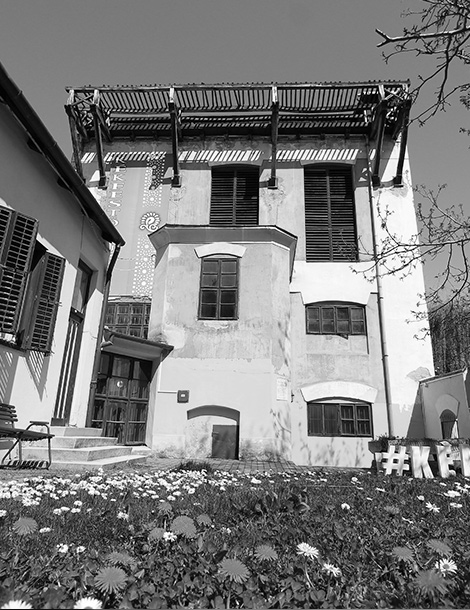The Museum Building

BLUE-DYEING MUSEUM
The Museum Building
The first representation of the land that housed the workshop of the Kluge family dates from 1793, its earliest owner is known from the middle of the 18th century.
We know the former building that stood on the street front from the engraving published in the September 19, 1858 edition of Vasárnapi Újság. Carl Friedrich Kluge bought the 18. century building when he moved to Pápa in 1786. His son Károly Kluge (1791 - 1838) can be associated with a building with two shop doors in the first half of the 19th century. The buildings still standing today (residential building, workshop-dryer) were built during the operation of Ferenc Kluge (1827-1871). In 1861, he signed two contracts, one with master builder József Woita and one with master carpenter Ferenc Horváth for the construction of the new workshop building. The workshop was probably completed in 1863-64, the residential building in 1869.
The facade is geometric, arranged on the basis of classicist principles, with romantic decorative elements, with rosettes and garland decorations in the middle of the windows on the first floor and above the shafts. Ferenc's son Károly (1853 – 1919) remodeled the street facade and the interior of the residential building and built the "Little Factory" on the other side of Tapolca, which was put into operation in 1903. After the early death of Ferenc Kluge (1887 – 1923), Béla Karcsay (1882 – 1955) managed the company. The workshop ended its operation in 1956.


